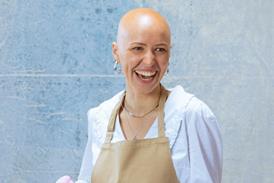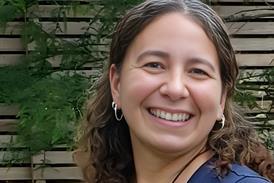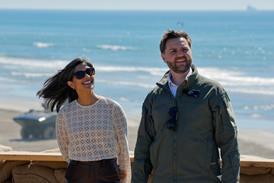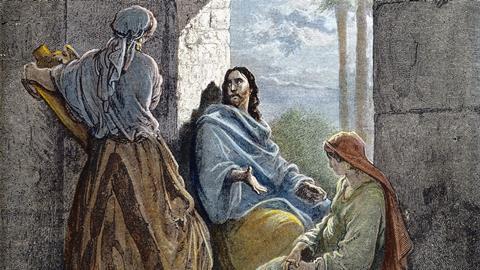Rev Katherine Chow looks at why we can find it hard to stop, and what we can learn from Jesus about getting the balance between doing and resting
I am a self-confessed doer and like to get things done: I find it hard to slow down and simply be present and in the moment. Over the years, I’ve been fascinated by the rhythm of work and rest. This is partially because I have often struggled to get the balance right and find it hard to stop.
I was raised by immigrant parents who instilled a strong work ethic in their children. Our summer holidays weren’t restful. Interspersed with moments of play were a plethora of educational activities that kept us productive. One August in my childhood, my dad thought it would be a good idea for us to learn how to touch type over the summer. Every day for six weeks, we spent hours learning how to type on the keyboard without looking down at our fingers. It was neither restful nor fun.
Annual abandonment
If we are fortunate enough, there are inflection points in the year where activity slows down and we have these reset moments for recuperation, refreshment and reflection. I’ve heard it said that we should: divert daily, withdraw weekly and abandon annually. August is often the month for annual abandonment. We are given permission from whoever it is that authorises our annual leave requests to hit pause, take a breath and rest. But rest does not come naturally to me; I wish I could just switch my brain off. I have to fight hard to resist the urge to produce. This may be because somewhere along the line I have believed a lie that if I stop, my worth and sense of self will be at risk. It’s easier for me to do than to stop and simply be.
A heart posture
What does real rest look like? Each person is uniquely wired and therefore will be refreshed in different ways, so I don’t want to get formulaic about the practicalities. Over the years, I’ve realised that feeling rested isn’t necessarily about short breaks and sabbaticals but about a state of mind and a posture of the heart. I’ve felt restless on holiday and anxious with nothing on my to-do list. It’s hard to be still and know that he is God (Psalm 46:10). The kind of rest I’m looking for comes not so much from the ceasing of activity but from being connected to a person. It’s a peace that, I believe, comes from God.
Learning from Jesus
This is the rest that Jesus mentions in Matthew 11:28-30. He invites the tired, weary and worn out to get away with him, discover his rhythm of grace, recover our lives and take a rest. In relationship with Jesus, we learn how to live freely and lightly. Jesus got the balance between engagement and withdrawal right. He knew when he needed to be present with people and when to retreat and be alone with God. He knew when it was time to act and when it was time to be still.
Somewhere along the line I have believed a lie that if I stop, my worth and sense of self will be at risk
In Luke 10:38-42, Jesus arrived at the home of Mary and Martha. Martha was ambitious, busy, conscientious and liked to get things done. Martha knew Jesus; she had opened up her home to him. Jesus was literally in her house and yet she remained distracted, overwhelmed, worried and upset. Martha reminds us of what life in our modern world can look like, even for those who have faith. We live in a world inundated with constant digital distraction, information overload and heightened anxiety, which means it’s increasingly hard to switch off and focus on what’s important.
Mary, on the other hand, modelled something different. She was calm, content and focused on sitting at Jesus’ feet with no agenda, hanging on to his every word. Mary wanted to be with Jesus, to enjoy his presence and sit in the space Jesus had created for her. Households in that time were divided into male and female spaces. The kitchen was a female space and the place at a rabbi’s feet in the living area was a male one. Yet Jesus gave Mary permission to learn from him, to listen to his teaching, to be his disciple and to sit under his authority. Jesus controversially redefined spaces and roles for women – he was the original advocate of women’s liberation. But when Jesus sets a person free, not everyone is happy about it.
Noticing where her sister was, Martha stomped in and demanded that Jesus tell Mary to get back into the kitchen to help her with the work that had become too much for one person to handle alone. Mary’s posture of stillness and focused attention on Jesus was offensive to Martha. But Jesus tenderly addressed Martha and pointed out that she had become worried, distracted and upset about many things, whereas Mary had chosen the only thing that is ever needed – to be present and connected to him.
An invitation to stay connected
I often feel restless, anxious and overburdened when I am disconnected from Jesus, but he doesn’t call us to frenetic busyness and activity in isolation. This is inevitably what leads to unsustainable burnout and the inability to stop and rest. Instead, Jesus invites us to be connected to him, to find our identity, rest and purpose in him, to keep rediscovering his rhythms of grace and to partner with him.
I am currently on holiday, trying my best to read a mindless murder mystery novel, fighting the urge to measure my productivity in my ability to finish the book before I head home. There is a bit of Martha and a bit of Mary that live inside me. The activist and the contemplative. I’ve come to believe that Jesus knows these parts of me, embraces this duality within and gently invites me daily to find my rest in him.
May your annual abandonment be graced with God’s presence and, inspired by the words of the psalmist (Psalm 62:5), may your soul find rest in God this August.


































No comments yet